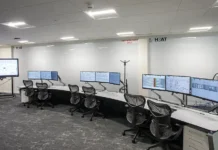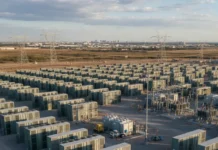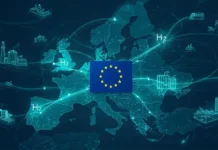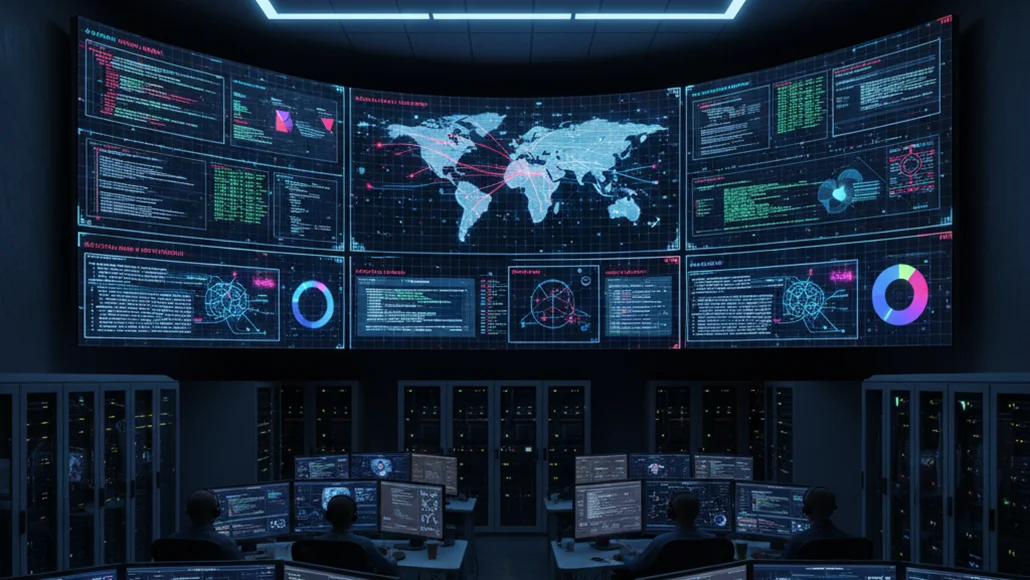Cybersecurity in Industrial Power Systems Under the Digital Transformation Wave
The digital transformation sweeping across the power generation industry brings unprecedented opportunities for operational efficiency and grid modernization, yet simultaneously introduces complex cybersecurity in industrial power systems challenges that threaten critical infrastructure security. As power systems evolve from isolated, manually operated networks into interconnected, digitally controlled smart grids, the attack surface for malicious actors expands exponentially, creating urgent needs for comprehensive security frameworks that protect essential energy infrastructure.
The transformation from traditional power grids to intelligent, automated systems represents one of the most significant technological shifts in energy sector history. Modern power systems integrate renewable energy sources, smart meters, automated control systems, and real-time data analytics platforms that enable dynamic response to changing energy demands. However, this digital evolution creates numerous entry points for cyberattacks that could disrupt power delivery, manipulate energy flows, or cause widespread blackouts affecting millions of consumers.
Power system security concerns have escalated dramatically as cyberattacks on energy infrastructure doubled between 2020 and 2022 according to European energy security data. The increasing sophistication of cyber threats, combined with the critical nature of power generation and distribution systems, makes cybersecurity implementation a cornerstone requirement for successful digital transformation initiatives.
The Digital Transformation Landscape in Power Systems
Modern power infrastructure relies increasingly on smart grid security technologies that enable bidirectional communication between utilities and consumers, automated demand response systems, and real-time grid optimization. These advancements include advanced metering infrastructure, distribution automation systems, and integrated renewable energy resources that require sophisticated control and monitoring capabilities.
The proliferation of Internet of Things (IoT) devices throughout power systems creates extensive sensor networks that monitor everything from transformer temperatures to power quality metrics. While these devices provide valuable operational data, each connected device represents a potential entry point for malicious actors seeking to infiltrate critical power system controls.
Cloud computing adoption in power utilities has grown from 45% to over 70% in recent years, enabling enhanced data analytics and operational efficiency. However, cloud integration introduces additional cybersecurity considerations related to data protection, access control, and network segmentation between operational technology and information technology systems.
Artificial intelligence and machine learning applications in power systems enable predictive maintenance, automated load forecasting, and optimization algorithms that improve system efficiency. These advanced technologies require robust cybersecurity protections to prevent manipulation of algorithms or corruption of training data that could compromise system operations.
Understanding Cyber Threats to Power Infrastructure
The complexity of cybersecurity in industrial power systems stems from the diverse range of threats targeting different aspects of power generation, transmission, and distribution infrastructure. State-sponsored actors increasingly target energy infrastructure as part of geopolitical strategies, while cybercriminal organizations seek financial gain through ransomware attacks and system disruption.
Malware attacks represent one of the most common threats to power systems, with ransomware specifically designed to encrypt critical operational data and demand payment for system restoration. These attacks can cripple power plant operations by preventing access to control systems, maintenance records, and operational procedures essential for safe power generation.
Phishing attacks target power system personnel through deceptive communications that appear legitimate but contain malicious links or attachments. Once attackers gain initial access through compromised credentials, they can move laterally through networks to access critical operational systems and manipulate power generation or distribution controls.
Denial-of-Service (DoS) and Distributed Denial-of-Service (DDoS) attacks overwhelm power system networks with excessive traffic, potentially disrupting real-time monitoring systems and automated controls. These attacks can delay critical operational responses and interfere with grid stability management during peak demand periods.
Supply chain vulnerabilities pose growing threats as power systems increasingly rely on third-party software, cloud services, and imported hardware components. Compromise of vendor systems can provide attackers with backdoor access to multiple power generation facilities using affected products or services.
Regulatory Frameworks and Compliance Requirements
Governments worldwide recognize the critical importance of power system cybersecurity and implement increasingly stringent regulatory requirements for critical infrastructure protection. In Germany, the IT Security Act 2.0 (ITSiG 2.0) requires companies operating critical infrastructure to maintain specific cybersecurity standards for their equipment and facilities.
The United States Industrial Control Systems (ICS) Cybersecurity initiative provides frameworks and guidance for protecting operational technology systems in power generation and distribution facilities. These standards address network segmentation, access controls, and incident response procedures specifically designed for industrial control environments.
European cybersecurity directives including the Network and Information Systems Directive (NIS2) establish mandatory security requirements for energy sector operators. These regulations require implementation of risk management procedures, incident reporting systems, and security measures proportionate to identified risks.
North American Electric Reliability Corporation (NERC) Critical Infrastructure Protection (CIP) standards establish cybersecurity requirements for bulk electric system operators. These standards mandate specific security controls for critical cyber assets and require regular compliance audits and security assessments.
Implementing Comprehensive Security Frameworks
Effective industrial cybersecurity implementation requires layered security approaches that protect power systems at multiple levels. Network segmentation creates barriers between operational technology and information technology systems, limiting the potential spread of cyber attacks from corporate networks to critical control systems.
Multi-factor authentication systems ensure that access to critical power system controls requires multiple verification methods, reducing the risk of unauthorized access through compromised credentials. These systems should include both technical factors such as hardware tokens and biometric verification methods.
Advanced threat detection technologies leverage artificial intelligence and machine learning to identify unusual network activity or system behavior that may indicate cyber attacks. These systems can detect previously unknown attack patterns and provide rapid alerts to security teams for investigation and response.
Encryption technologies protect data transmission between power system components and ensure that intercepted communications cannot be used by attackers to understand system operations or manipulate control signals. End-to-end encryption should protect both operational communications and maintenance data transfers.
Operational Technology Security Considerations
Smart power systems require specialized security approaches that address the unique characteristics of operational technology environments. Unlike traditional information technology systems, operational technology networks require real-time performance and high availability that can complicate security implementation.
Air-gapped networks provide physical separation between critical control systems and external networks, reducing the risk of remote cyber attacks. However, these approaches must be balanced against operational efficiency needs and requirements for remote monitoring and control capabilities.
Secure remote access systems enable authorized personnel to monitor and control power systems from remote locations while maintaining strong security controls. These systems should include virtual private networks, multi-factor authentication, and session monitoring capabilities.
Industrial control system security focuses specifically on protecting programmable logic controllers, human-machine interfaces, and supervisory control and data acquisition systems that directly control power generation equipment. These systems require specialized security tools designed for industrial environments.
Incident Response and Recovery Planning
Comprehensive cybersecurity programs require detailed incident response plans that address different types of cyber attacks and their potential impacts on power system operations. These plans should include procedures for isolating affected systems, maintaining essential power generation capabilities, and coordinating with regulatory authorities and law enforcement agencies.
Business continuity planning ensures that power generation facilities can maintain operations during cyber incidents through backup systems, manual operating procedures, and alternative control methods. These plans should be regularly tested through tabletop exercises and simulated cyber attack scenarios.
Forensic capabilities enable power system operators to understand attack methods, assess damage, and gather evidence for law enforcement investigations. These capabilities should include secure data collection procedures and specialized analysis tools for industrial control systems.
Recovery procedures ensure that power systems can be safely restored to normal operations after cyber incidents while preventing reinfection or residual attacker access. These procedures should include system validation, security verification, and gradual restoration protocols that maintain power system stability.
Emerging Technologies and Future Challenges
The evolution of cyber threats in energy continues advancing as attackers develop more sophisticated techniques specifically targeting power infrastructure. Artificial intelligence-powered attacks may soon be able to automatically identify vulnerabilities and adapt attack strategies in real-time, requiring correspondingly advanced defensive technologies.
Quantum computing developments pose long-term challenges to current encryption technologies used in power system security. Organizations must begin planning for quantum-resistant cryptographic solutions that can protect power infrastructure against future quantum computing capabilities.
5G and edge computing technologies enable new power system applications but also create additional security considerations related to network architecture, device authentication, and data protection. These technologies require specialized security frameworks that address their unique characteristics.
Internet of Things expansion in power systems creates millions of connected devices that require individual security management and monitoring. Scalable security solutions must address device authentication, firmware updates, and anomaly detection across vast sensor networks.
Public-Private Collaboration and Information Sharing
Effective smart grid security requires collaboration between government agencies, private utilities, technology vendors, and cybersecurity organizations. Information sharing initiatives enable rapid dissemination of threat intelligence and attack indicators across the energy sector.
The European Network and Information Security Agency (ENISA), Computer Emergency Response Team European Union (CERT-EU), and European Cybersecurity Competence Centre facilitate intelligence sharing and coordinated response capabilities. These organizations provide centralized resources for threat analysis and incident coordination.
Industry consortiums and professional organizations develop best practices, security standards, and training programs that help power system operators implement effective cybersecurity measures. These collaborative efforts leverage collective expertise to address common security challenges.
Cross-border cooperation becomes essential as power grids increasingly interconnect across national boundaries. Cyber attacks on interconnected systems can have cascading effects across multiple countries, requiring coordinated international response capabilities.
Investment and Workforce Development
The cybersecurity workforce shortage affects all industries but poses particular challenges for power system operators who require specialized expertise in both cybersecurity and operational technology. The European Union faces an estimated 260,000 to 500,000 unfilled cybersecurity positions across all sectors.
Training programs must address the unique requirements of power system cybersecurity, including operational technology security, industrial control system protection, and power system emergency response procedures. These programs should combine theoretical knowledge with hands-on experience using actual power system technologies.
Investment in cybersecurity technologies must balance cost considerations with risk mitigation requirements. Power system operators should prioritize investments based on risk assessments that consider both the likelihood and potential impact of different cyber threats.
Public-private partnerships can help address funding challenges for cybersecurity improvements, particularly for smaller utilities that may lack resources for comprehensive security upgrades. Government incentive programs and shared security services can make advanced protection technologies more accessible.
Integration with Safety and Reliability Systems
Critical infrastructure protection requires integration between cybersecurity systems and existing safety and reliability frameworks in power generation facilities. These integrated approaches ensure that security measures do not compromise operational safety or reduce system reliability.
Functional safety systems in power plants must be protected against cyber attacks that could manipulate safety controls or disable protective systems. Security measures should be designed to enhance rather than interfere with safety system operations.
Grid reliability requirements mandate that cybersecurity implementations maintain real-time performance characteristics essential for power system stability. Security measures must be evaluated for their impact on system response times and operational flexibility.
Emergency response procedures should address scenarios where cyber attacks coincide with physical emergencies or natural disasters. These integrated response plans ensure that power systems can maintain essential services under combined threats.
Cybersecurity in industrial power systems represents a critical enabler for successful digital transformation in the energy sector. As power systems become increasingly connected and automated, robust cybersecurity frameworks become essential for protecting critical infrastructure and maintaining reliable power delivery. The combination of regulatory compliance, technological implementation, workforce development, and public-private collaboration creates comprehensive protection strategies that enable power systems to realize digital transformation benefits while maintaining security and reliability. Organizations that proactively address cybersecurity challenges will be better positioned to leverage advanced technologies for improved operational efficiency and enhanced grid services.
Key Takeaways:
- Cyberattacks on power systems doubled between 2020 and 2022
- Regulatory frameworks mandate specific cybersecurity requirements for critical infrastructure
- Layered security approaches protect operational technology and information technology systems
- Public-private collaboration enables threat intelligence sharing and coordinated responses
- Workforce development addresses specialized cybersecurity expertise requirements for power systems



































